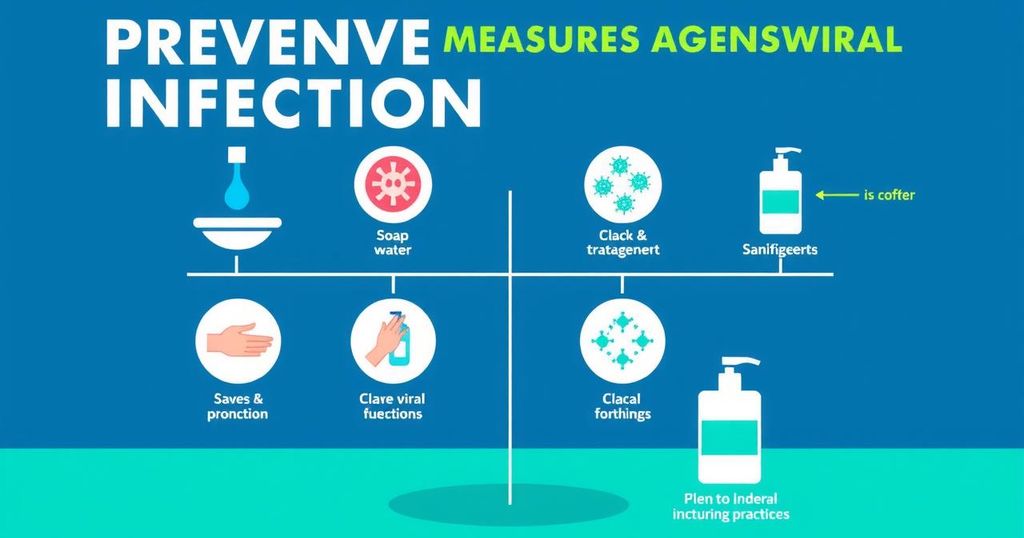Understanding Nigeria’s Lassa Fever Outbreak: Key Facts and Safety Measures

Lassa fever poses a significant health challenge in Nigeria, with 100 fatalities and thousands of suspected cases reported in early 2025. The virus is transmitted through contact with infected rodents and contaminated items. Various factors contribute to the persistent outbreaks, including poor diagnostics and socio-economic conditions. Increased public awareness and proactive health measures are vital for controlling the disease’s spread.
Lassa fever continues to impact Nigeria significantly, with the Nigeria Centre for Disease Control (NCDC) reporting 100 deaths in the first quarter of 2025. As of March 2, there have been 2,728 suspected cases and 535 confirmed cases across 13 states, with Ondo, Bauchi, Edo, and Taraba being most affected. The disease exhibits a fatality rate of 18.7%, including the death of a 31-year-old medical professional.
Lassa fever is a viral hemorrhagic disease caused by the Lassa virus, first identified in Borno, Nigeria, in 1969. The virus is primarily transmitted from the Natal multimammate mouse, which thrives in rural areas with inadequate sanitation. Humans typically contract the virus through contaminated food or household items, as well as direct contact with infected rodents. Initial symptoms often include fever and malaise but can progress to severe complications, particularly in pregnant women.
The persistence of Lassa fever outbreaks in Nigeria can be attributed to several factors, including insufficient public awareness, delayed case management, and diagnostic challenges due to symptom overlap with malaria and typhoid. NCDC Director General, Jide Idris, noted that cases have surged since 2015, with only seven testing laboratories available in the country, an increase from three in 2017.
Typically, Lassa fever cases peak between October and May during the dry season, increasing human contact with rodents. Climate change may exacerbate this issue, leading to extended periods of rodent activity. Dr. Yetunde Abioye from the NCDC remarked that while the geographical reach of the virus has expanded, gaps still exist in effective community control measures, particularly concerning sanitation and food safety.
Virologist Oyewale Tomori emphasizes the need for a comprehensive response to the disease that considers its multifaceted nature. He criticized Nigeria’s reliance on outdated methods to combat Lassa fever, noting the importance of a thorough “one-health approach” that integrates social, cultural, and economic factors. Furthermore, Dr. Eniola Erinosho stated that inadequate food storage facilities have exacerbated the situation, suggesting an overhaul of agricultural systems to control the virus effectively.
To combat Lassa fever effectively, Tomori has advocated for increased public awareness regarding the disease’s transmission and symptoms. He called for it to be declared a health emergency. Additionally, Dr. Rotimi Adesanya urges the public to engage with health authorities like the NCDC in prevention efforts, highlighting the importance of availability of the antiviral drug Ribavirin for treatment, as no vaccine is currently available.
The NCDC is actively addressing the outbreak by implementing a national Lassa fever incident management system. They are collaborating with other agencies to control the virus’s spread and providing personal protective equipment, Ribavirin, and thermometers in high-risk areas. Public health advice includes maintaining cleanliness, securely storing food, sealing potential rodent entry points, and appropriate waste disposal to minimize rodent access.
In conclusion, Nigeria’s ongoing challenge with Lassa fever has led to a significant healthcare crisis, marked by rising case counts and fatalities. The response requires heightened public awareness, enhanced healthcare infrastructure, and a comprehensive approach addressing socio-economic factors. By improving agricultural practices and ensuring access to treatment while fostering community engagement, Nigeria can enhance its preparedness and response to this persistent health threat.
Original Source: africacheck.org






